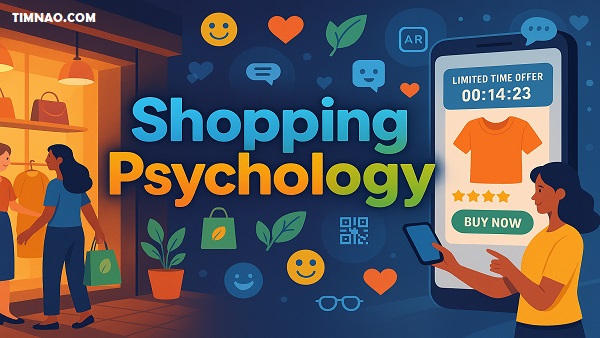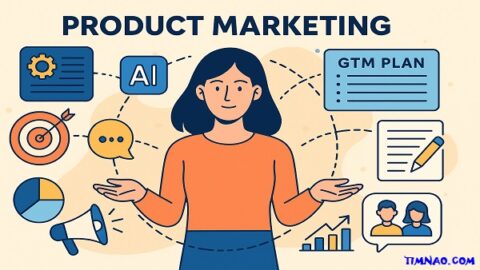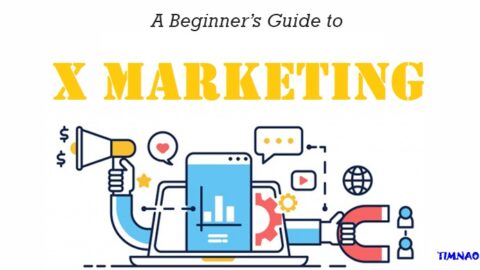Unlocking the Psychology of Shopping 🛍️: Proven Strategies to Transform Retail Success
Shopping psychology is the hidden force shaping every decision we make when browsing a store or scrolling online. Whether we’re aware of it or not, emotions, design, and subtle cues influence how much we spend and what we choose to buy. For retailers, understanding these patterns is more than a competitive advantage—it’s the key to building customer trust, boosting sales, and creating memorable experiences.
In this guide, we’ll break down the fascinating world of consumer behavior and retail strategy in a way that’s simple and practical for beginners. From the psychology behind impulse purchases to innovative technologies that even small shops can use, you’ll discover actionable tips that can transform any shopping experience. By the end, you’ll see how psychology, design, and innovation work together to create winning retail strategies that customers love.
Table of Contents
- 🧠 Understanding the Psychology of Shopping
- 📊 Why Consumer Behavior Shapes Retail Success
- 🎯 Emotional Triggers That Drive Purchases
- 🛒 Store Layouts and Design That Influence Buying
- 💡 Innovative Retail Technologies for Beginners
- 📱 The Role of Digital Shopping and Social Media
- 🌍 Sustainability and Conscious Consumer Trends
- ⚡ Actionable Retail Strategies for Small Businesses
- 🚀 Future of Retail: What’s Next?
- 🙋 FAQs: Beginner Questions About Shopping Psychology Answered
🧠 Understanding the Psychology of Shopping
When people step into a store or browse online, they often believe they are making rational, well-thought-out decisions. In reality, shopping psychology proves otherwise. Our brains take shortcuts, our emotions interfere, and the environment around us quietly nudges us toward buying more than we intended. If you’re a beginner in retail or marketing, learning how this works gives you tools you can apply instantly.
The Role of the Five Senses
One of the most powerful aspects of shopping psychology is sensory influence. Customers don’t just see a product—they experience it with sight, sound, smell, touch, and sometimes even taste. These sensory triggers bypass logic and connect directly with emotions.
- Sight: Lighting, colors, and visual displays change how customers perceive value. For example, luxury stores often use soft lighting and minimalist design to suggest exclusivity.
- Sound: Upbeat music in fast fashion shops encourages quick purchases, while slow music in restaurants makes diners linger and order more.
- Smell: The scent of coffee drifting outside a café or fresh bread at a bakery draws people in before they even notice a menu.
- Touch: Allowing customers to physically interact with products builds attachment. Think of how Apple stores encourage visitors to handle devices.
👉 Try this now: If you own a shop, adjust one sensory element for a week. Change the playlist, add a signature scent, or test brighter lighting in your product displays. Observe how long people stay and what they buy more of.
Emotional Triggers in Everyday Shopping
Most purchases aren’t about the product itself—they’re about the feeling it creates. This is why people spend more on a designer handbag than on a no-name bag with the same function. The handbag signals success, confidence, or belonging to a social group.
Here are three emotions commonly activated in retail:
- Excitement: Limited-time launches or seasonal products build anticipation.
- Comfort: Familiar products or nostalgic designs remind customers of “the good old days.”
- Confidence: Premium brands or personalized service make customers feel proud of their choice.
👉 Practical tip: Think beyond features. Instead of saying, “This jacket is waterproof,” say, “This jacket keeps you warm and confident even in a storm.” Frame the product around how it makes people feel.
Cognitive Shortcuts: How Our Brains Trick Us
Psychologists call them heuristics, but in plain language, they are mental shortcuts. They help us make decisions fast, but they also make us predictable to smart retailers.
- Anchoring: The first number we see sets the stage. If the “original” price of a sofa is $1,000 but it’s “discounted” to $699, most people will feel they’re getting a bargain—even if $699 is still high.
- Scarcity: Words like “only 2 left in stock” trigger fear of missing out (FOMO). Scarcity makes products seem more valuable.
- Social Proof: Seeing reviews, star ratings, or “bestseller” tags reassures us that others approve.
👉 How to apply:
- List a “regular price” next to a discounted one.
- Add real customer testimonials on your website or store walls.
- Use countdown timers for limited-time offers.
Shopping as Therapy
Another truth about shopping psychology is its emotional payoff. For many, shopping is a way to relieve stress, celebrate achievements, or simply feel better after a bad day. That’s why it’s called “retail therapy.” Retailers who recognize this can design spaces and services that feel like a treat, not just a transaction.
👉 Easy step for beginners: Add a small element of surprise or delight. A handwritten thank-you note in an online package or offering free samples in-store creates joy and strengthens loyalty.
Shopping psychology boils down to this: people rarely buy with their minds alone—they buy with their hearts. Once you understand these triggers, you can start designing experiences that guide decisions in a natural, human way. But to use psychology effectively, you must also understand consumer behavior, which explains how and why these triggers influence actual buying patterns.
📊 Why Consumer Behavior Shapes Retail Success
If psychology explains why people are influenced, consumer behavior shows how those influences play out in real life. For retailers, studying consumer behavior isn’t optional—it’s the foundation of a winning retail strategy. Beginners who skip this step risk guessing instead of making smart, informed choices.
The Shift from Passive to Active Shoppers
In the past, people relied on ads and salespeople for information. Today, shoppers are empowered. With smartphones, they compare prices instantly, read reviews, and watch unboxing videos before buying. This means selling isn’t just about stocking shelves—it’s about meeting informed customers where they are.
👉 Action step: Assume every customer has researched before arriving. Train staff to provide extra insights—like explaining product quality, sharing behind-the-scenes sourcing, or offering styling ideas—that aren’t obvious online.
Personalization Is No Longer Optional
A study showed that 73–80% of customers prefer brands that personalize experiences. Shoppers don’t want to feel like just another transaction. They want to feel recognized.
- Big players: Netflix recommends movies. Amazon suggests products. Starbucks remembers your coffee order.
- Small business version: A bookstore owner can recommend new releases based on past purchases. A café barista can remember a regular’s name and drink.
👉 How to apply: Start small with a customer notebook or free CRM app. Write down names, preferences, or frequent purchases. Use that data to greet people personally and recommend items that truly fit them.
Building Trust in a Skeptical Market
Modern consumers are wary of polished ads. They rely on other shoppers’ voices instead. A single negative review can cost you business, while a glowing one can bring in dozens of new customers.
👉 Practical tip: Encourage happy customers to leave reviews on Google or Yelp. Don’t fear bad reviews—respond professionally, fix the issue, and show future customers that you care.
Convenience Is King
Amazon set a new bar for convenience: fast delivery, one-click purchase, and easy returns. Today’s shoppers expect the same smooth experience everywhere. That doesn’t mean you need Amazon’s budget. Even small tweaks make a difference.
👉 Quick wins:
- Offer mobile payment options like Square or PayPal.
- Provide click-and-collect or curbside pickup for busy customers.
- Keep return policies simple and fair.
Generational and Cultural Nuances
Not all customers behave the same way. Generational habits shape consumer behavior:
- Gen Z: Digital natives who value authenticity and sustainability. They’re more likely to discover products on TikTok.
- Millennials: Prefer experiences and community-driven brands. They want more than just a product—they want a story.
- Older generations: Often prioritize reliability, customer service, and clarity.
👉 Beginner strategy: Don’t try to please everyone. Identify your core audience and tailor your messaging to their values and habits.
The Overlooked Step: Post-Purchase Behavior
The shopping journey doesn’t end at checkout. What happens after a purchase influences whether customers return. A positive post-purchase experience creates loyalty; a poor one can cost you future revenue.
👉 Practical ideas:
- Send follow-up emails thanking customers and offering tips on using the product.
- Launch a simple loyalty program with discounts for repeat buyers.
- Make returns easy to avoid frustration.
When you combine psychology with an understanding of consumer behavior, you unlock the real engine behind retail success. One shows you why customers are influenced; the other shows you how they act in response. Together, they form the foundation for strategies that feel natural, personal, and effective.
And now that we’ve built this foundation, it’s time to explore the specific emotional triggers retailers can use to spark action and inspire purchases.
🎯 Emotional Triggers That Drive Purchases
Have you ever bought something you didn’t plan to—maybe a pack of gum at checkout, a pair of sneakers on sale, or a limited-edition coffee mug? That wasn’t just chance. It was the result of emotional triggers retailers intentionally set in motion. For beginners in retail or e-commerce, mastering these triggers can transform how customers interact with your brand.
1. Scarcity and Urgency
When people feel they might miss out, they act fast. This is the FOMO effect—fear of missing out. Think about airline sites that flash “Only 2 seats left at this price!” or clothing stores with a “Sale ends tonight” banner. These cues push customers from hesitation to decision.
👉 How to apply right now:
- Use countdown timers for promotions on your website.
- Add “only a few left” labels for popular items.
- In-store, create “limited edition” shelves or corners to spotlight scarce products.
2. Social Proof
Humans look to others for guidance, especially when uncertain. That’s why reviews, testimonials, and influencer endorsements are so powerful. When customers see others enjoying your product, they feel safer making the same choice.
👉 Quick wins:
- Display customer reviews with photos on your site.
- Use social media reposts of real customers using your products.
- Add a “Bestseller” or “Most Popular” tag to your top items.
3. Anchoring and Contrast
Shoppers rarely know the true value of something. Instead, they compare it with what’s around. If you see a $100 shirt next to a $250 one, suddenly the $100 option feels like a steal. This is called anchoring—and it’s why restaurants list a high-priced wine next to mid-range bottles.
👉 How to apply:
- Place premium items next to mid-tier options to make mid-tier feel affordable.
- Use bundles: show the single price, then offer a bundle that looks like a bargain.
4. Reciprocity
When people receive something for free, they feel an urge to give back. That’s why free samples in supermarkets work so well. Even a small gift—like a thank-you card or a free cookie with coffee—can boost loyalty.
👉 Actionable tip:
- Offer free samples, trials, or small gifts with purchase.
- Online? Add a free digital guide, checklist, or bonus item with orders.
5. Storytelling and Nostalgia
We connect with stories, not just facts. A product tied to a narrative—like a handmade craft supporting local artisans—triggers emotions stronger than a plain description ever could. Similarly, nostalgia (products reminding people of childhood or “simpler times”) creates comfort and joy.
👉 How to apply:
- Share the story of how your product is made or the people behind it.
- Use retro designs, packaging, or limited-time “throwback” editions.
6. Status and Identity
Purchases often reflect who we are—or who we want to be. Luxury brands thrive on this trigger. Wearing a Rolex isn’t just about telling time; it’s about signaling success. Even affordable brands do it. Think of sneaker culture, where certain models symbolize belonging to a community.
👉 How to use ethically:
- Position your brand to align with values customers identify with—eco-conscious, adventurous, trendy, or practical.
- Offer products that help people feel unique or part of a group.
Key lesson: Emotional triggers don’t manipulate—they guide. When used ethically, they make shopping more exciting, memorable, and rewarding for the customer. And when emotions lead to action, the environment where customers shop plays a huge role, which brings us to store layouts and design.
🛒 Store Layouts and Design That Influence Buying
Think of a store like a stage. Every light, display, and pathway is carefully set to direct attention, encourage discovery, and spark purchases. Store layout design isn’t about decoration—it’s about guiding consumer behavior. For beginners, this is one of the most practical tools you can use, even with a small shop or limited budget.
The Decompression Zone
The first few steps inside a store are critical. This is called the decompression zone, where customers adjust from the outside world to your shopping environment. If the entryway is cluttered or overwhelming, they may feel rushed and miss key products.
👉 Practical tip: Keep the entrance open and inviting. Use a striking display to set the tone but avoid cramming too many products upfront.
Product Placement Psychology
- Eye Level = Buy Level: Products placed at eye level sell better. This is why premium cereals sit at adult eye level, while sugary ones target kids at lower shelves.
- Destination Items at the Back: Essentials like milk or bread are placed at the back of supermarkets so shoppers pass through other aisles and grab extras along the way.
- Impulse Zones: Checkout counters are perfect for small, low-cost items like snacks, chargers, or cosmetics.
👉 Action steps:
- Place high-margin or new items at eye level.
- Create “impulse shelves” near checkout with fun, affordable products.
- Position bestsellers in spots where customers naturally pause.
The Power of Flow and Pathways
Stores often use a “racetrack” layout, guiding customers in a loop around the space. IKEA is the master of this—shoppers walk through every section, encountering products they never planned to buy.
👉 How you can apply:
- Use signage or floor arrows to encourage a natural flow.
- If you run a small store, design a simple loop instead of straight aisles.
Lighting and Atmosphere
Lighting isn’t just functional—it sets mood. Bright lighting emphasizes freshness in grocery stores, while warm tones in a boutique create intimacy. Similarly, background music influences pace: fast beats encourage quick decisions; slow rhythms invite lingering.
👉 Quick experiments:
- Spotlight seasonal or promotional products with brighter lighting.
- Adjust background music to match your brand personality.
Digital and Hybrid Layouts
With online shopping booming, physical and digital layouts increasingly overlap. QR codes on shelves link to product stories. Interactive screens suggest pairings or offer styling tips. Even small shops can experiment with affordable tech.
👉 Beginner-friendly idea: Use QR codes that lead to customer reviews, how-to videos, or product details online. This blends offline trust with online depth.
Comfort and Community
Finally, people buy more when they feel comfortable. Seating areas, mirrors, or interactive spaces invite customers to slow down and enjoy the experience. Some stores even create mini-communities—like bookstores with reading corners or cafés offering live music.
👉 How to apply without big costs: Add a simple seating area, selfie-friendly backdrop, or community board to make the space feel welcoming.
When emotions spark desire and layouts guide the journey, the result is a seamless, engaging shopping experience. But today’s customers don’t just shop in physical stores—they move between online, social media, and in-person spaces. To keep up, retailers must also embrace innovation and technology. That’s where we’ll head next: exploring how even beginners can use innovative retail technologies to compete in a fast-changing world.
💡 Innovative Retail Technologies for Beginners
When people hear “retail technology,” they often think of giant corporations with billion-dollar budgets. But here’s the truth: even the smallest shop can use innovative tools to simplify operations, improve customer experience, and compete with big players. You don’t need advanced coding skills or huge investments. Many beginner-friendly solutions are affordable—or even free.
Point-of-Sale (POS) Systems Made Simple
Gone are the days of bulky cash registers. Today’s POS apps like Square, Shopify POS, or Lightspeed work on tablets or smartphones. They not only handle payments but also track sales, inventory, and customer data automatically.
👉 How you can start:
- Use a POS app to accept card, mobile wallet, or contactless payments.
- Monitor what products sell fastest so you know where to focus promotions.
- Collect customer emails during checkout to build a mailing list.
Chatbots and Virtual Assistants
Answering every customer inquiry manually takes time. With chatbots, you can automate responses for common questions like opening hours, return policies, or product availability. Tools such as ManyChat or Tidio integrate directly with websites or Facebook Messenger.
👉 Quick win: Set up a simple chatbot that greets visitors, answers FAQs, and offers a discount code to first-time customers.
Augmented Reality (AR) Experiences
AR used to sound futuristic, but now it’s accessible to small businesses. It lets customers “try before they buy.” For example, furniture retailers let buyers preview how a couch fits into their living room with a phone camera. Beauty brands offer AR filters to test lipstick shades.
👉 Beginner step: If you can’t build your own AR app, try using social media filters (on Instagram or Snapchat) that let customers “try on” products virtually.
Loyalty and Rewards Apps
Keeping a customer is cheaper than finding a new one. Loyalty apps like Stamp Me or Fivestars replace paper punch cards with digital rewards. Customers collect points on their phone, making it easy to track and redeem.
👉 Easy start: Create a digital loyalty card that gives every 10th purchase free. Promote it at checkout or on social media.
Smart Inventory Management
Stock-outs and overstocking are costly. Beginner-friendly tools like Zoho Inventory or inFlow automate stock tracking and send alerts when you’re running low.
👉 Practical tip: Start by connecting your online and offline stock systems. This prevents the awkward “sold out online but still in-store” problem.
QR Codes for Quick Info
QR codes are simple but powerful. They let shoppers scan with their phone to access menus, reviews, tutorials, or product details. During the pandemic, QR codes became popular, and they’re here to stay.
👉 Starter idea: Add a QR code on product tags that links to styling tips, recipes, or customer reviews.
Bottom line: Innovative tech doesn’t have to be intimidating. By starting small—using POS apps, simple chatbots, or QR codes—you can make shopping easier, faster, and more engaging. And once you start blending technology into your store, you’ll naturally see how digital shopping and social media complete the picture.
📱 The Role of Digital Shopping and Social Media
Shoppers today don’t think in terms of “online” vs. “offline.” They move seamlessly between the two. They might browse on Instagram, check reviews on Google, then walk into a physical store to buy. This mix is called omnichannel shopping, and it’s the new normal. For beginners, understanding how digital tools and social media influence customers is essential to staying relevant.
E-Commerce for Everyone
You don’t need a massive website to sell online. Platforms like Shopify, Etsy, or even Facebook Shops allow anyone to set up a storefront quickly. These platforms handle payments, shipping integration, and customer service basics.
👉 Beginner step: Start with one or two best-selling products online. Focus on high-quality photos, clear descriptions, and customer reviews.
Social Media as the New Storefront
Platforms like Instagram and TikTok are more than entertainment—they’re powerful sales channels. Customers often discover new products via reels, stories, or influencer reviews before ever visiting a website.
👉 Action steps:
- Use Instagram Shopping to tag products directly in posts.
- Share behind-the-scenes content to humanize your brand.
- Create short, authentic TikTok videos showing how your product solves a problem or improves life.
The Power of Influencers and Micro-Influencers
Influencers can sway buying decisions, but you don’t need to hire celebrities. Micro-influencers—local creators with 1,000 to 10,000 followers—often deliver better engagement because their communities trust them.
👉 How to start: Reach out to a local influencer and offer free products in exchange for a review or demo.
Reviews and Word of Mouth in the Digital Era
Digital shopping thrives on trust. Reviews are today’s word of mouth. A product with ten 5-star ratings is more appealing than one with none, even if it’s cheaper.
👉 Quick win: Send follow-up emails asking happy customers to leave a review. Offer a small discount or free shipping on their next order as a thank-you.
Mobile-First Experience
More than half of online shopping happens on smartphones. If your website isn’t mobile-friendly, you’re losing customers.
👉 Easy check: Open your site on your phone. Is the text readable? Do images load quickly? Is checkout simple? If not, adjust with mobile-friendly templates or website builders like Wix or Squarespace.
Blending Online and Offline
Smart retailers merge digital and physical worlds. Examples include:
- In-store QR codes that link to online reviews.
- “Buy online, pick up in-store” options for convenience.
- Encouraging customers to post photos with branded hashtags.
👉 Starter idea: Run a hashtag challenge where customers share photos using your product for a chance to win a small prize. This builds buzz online and draws people into your store.
Digital shopping and social media have shifted how people discover, evaluate, and purchase products. For beginners, this means thinking beyond transactions and focusing on experiences that flow across channels. But modern shoppers also care about something deeper than convenience—they want their purchases to reflect their values. That’s why the next crucial area to explore is sustainability and conscious consumer trends, which are redefining the future of retail.
🌍 Sustainability and Conscious Consumer Trends
Modern shopping isn’t just about products anymore—it’s about values. Customers increasingly care about where products come from, how they’re made, and whether brands are socially responsible. This shift is called conscious consumerism, and it’s shaping the future of retail in powerful ways.
Why Sustainability Matters
Shoppers, especially Millennials and Gen Z, want to support companies that reflect their ethics. A recent global study showed that more than 60% of consumers are willing to pay more for eco-friendly products. That doesn’t mean they’ll blindly buy anything labeled “green.” They’re looking for transparency and authenticity.
👉 Takeaway for beginners: Even if your business is small, showing genuine efforts toward sustainability can set you apart. Customers reward honesty and effort, not perfection.
Eco-Friendly Packaging
Single-use plastics are out. Recyclable, compostable, or reusable packaging is in. For example, many cafés now offer discounts when customers bring their own cups. Some online shops pack orders with biodegradable peanuts or recycled paper instead of bubble wrap.
👉 What you can do right now:
- Switch to paper bags instead of plastic.
- Offer small discounts to customers who bring reusable containers.
- Highlight your packaging choices on social media—it’s a selling point.
Local and Ethical Sourcing
Consumers love knowing that their money supports local farmers, artisans, or fair-trade suppliers. This creates a story around your product that resonates with customers who want to feel good about their purchase.
👉 Beginner idea: If you source locally, tell that story. Add a small sign: “Our vegetables come from a farm 10 km away” or “This jewelry is handmade by local artisans.”
Reducing Waste and Overproduction
Fast fashion has taught us the dangers of overproduction—cheap clothes worn once and tossed away. Many small businesses are now adopting slow retail, focusing on quality, durability, and timeless design.
👉 Starter step: Produce in smaller batches and highlight the exclusivity. Phrases like “crafted in small batches” give products an artisanal feel and reduce waste at the same time.
Transparency Builds Trust
Greenwashing—pretending to be eco-friendly without real action—destroys trust. Consumers are savvy and can spot insincerity. Instead of claiming to “save the planet,” be specific: “Our packaging is 100% recyclable,” or “We reduced plastic use by 40% this year.”
👉 Easy application: Create a simple “sustainability page” on your website outlining your actual practices. Even small steps count.
Aligning with Consumer Values
Conscious consumers also care about diversity, fair labor, and inclusivity. Brands like Patagonia thrive because they stand for more than clothing—they advocate for the environment.
👉 Beginner-friendly move: Support a cause aligned with your business. Donate a percentage of sales to local charities, or host community events. Customers will appreciate your brand’s deeper purpose.
Key lesson: Sustainability isn’t a passing trend—it’s becoming an expectation. Small businesses that embrace it early will not only help the planet but also win long-term loyalty. Now, let’s see how you can put all these ideas—psychology, consumer behavior, technology, and sustainability—into actionable retail strategies that drive real results.
⚡ Actionable Retail Strategies for Small Businesses
For beginners, retail can feel overwhelming: pricing, inventory, customer service, online presence, competition. The good news? You don’t need massive budgets to succeed. By focusing on a few practical, high-impact strategies, you can build momentum step by step.
1. Know Your Customers Inside Out
Understanding who shops with you is the foundation of every strong retail strategy. Without this, everything else is guesswork.
👉 Action steps:
- Ask short questions at checkout like, “What brought you in today?”
- Use simple surveys online with tools like Google Forms.
- Track buying habits using your POS system—what products sell fastest, which times are busiest.
2. Create Memorable Experiences
Products can be copied. Experiences cannot. A store visit should feel like more than a transaction—it should feel personal, enjoyable, and worth sharing.
👉 Practical tips:
- Add a small “wow” factor: free samples, gift wrapping, or seasonal décor.
- Design a photo-friendly corner where customers can take pictures.
- Train staff to greet with genuine warmth instead of scripted lines.
3. Embrace Data (Even If You Hate Numbers)
You don’t need to be a data scientist. Free tools like Google Analytics or your POS dashboard already give valuable insights.
👉 Beginner applications:
- Track which products people view but don’t buy—maybe pricing or presentation needs tweaking.
- See where online visitors come from: Instagram, search engines, or word of mouth.
- Identify repeat customers and reward them.
4. Optimize Store Layout and Design
We’ve seen how layouts influence buying. Even the smallest shops can benefit from intentional design.
👉 Steps you can take today:
- Rotate product displays weekly to keep things fresh.
- Put new arrivals in high-traffic areas.
- Use signs to guide customers through the store, highlighting deals.
5. Build an Online Presence That Works for You
Even if you’re mostly offline, digital visibility matters. Customers often Google before they visit.
👉 Essentials for beginners:
- Claim your Google Business Profile so you show up on maps and local searches.
- Post regularly on one platform your audience uses (don’t try to be everywhere at once).
- Use email marketing tools like Mailchimp to stay in touch.
6. Experiment with Promotions and Loyalty Programs
Discounts aren’t the only strategy. The goal is to reward loyalty and spark excitement.
👉 Ideas to try:
- “Buy one, gift one” events—customers love sharing.
- Tiered rewards: the more they spend, the bigger the perk.
- Surprise loyal customers with a freebie on their birthday.
7. Train and Empower Your Staff
Your employees are the face of your brand. A positive interaction can win a customer for life.
👉 Practical training tip: Don’t just train staff to answer questions—train them to suggest solutions. For example, instead of saying, “We don’t have that size,” they can say, “Let me check if we can order it for you.”
8. Keep Testing and Adapting
Retail is never static. What works today might fail tomorrow. Successful small businesses test, learn, and adapt constantly.
👉 Beginner mindset:
- Try a new product display—see if sales improve.
- Run a small social media ad with $20—measure results.
- Survey customers quarterly to check if their needs are changing.
Retail today is more than shelves and price tags—it’s about psychology, technology, sustainability, and strategy all working together. Small businesses have a unique advantage: they can adapt quickly, personalize deeply, and connect authentically. But the story doesn’t end here. To stay ahead, we also need to look forward and ask: what does the future of retail hold, and how can beginners prepare for it today?
🚀 Future of Retail: What’s Next?
Retail has always evolved, but the changes ahead are faster and more dramatic than anything before. For beginners entering this space, the challenge—and opportunity—is to stay agile. Let’s explore the trends shaping the next decade of shopping.
The Rise of Hybrid Retail
Online vs. offline isn’t a battle anymore—it’s a partnership. Future stores will combine both worlds. Imagine browsing online, reserving an item, then picking it up in-store within an hour. Or walking into a shop where interactive screens suggest outfits, and you can order sizes not available in-store for same-day delivery.
👉 Beginner tip: Even if you run a small shop, consider offering “buy online, pick up in-store” or letting customers order items you don’t have on shelves.
Artificial Intelligence Everywhere
AI is no longer just for tech giants. It’s creeping into everyday retail: personalized recommendations, demand forecasting, and even AI-powered customer service. ChatGPT-like assistants can answer questions, suggest products, and provide 24/7 support.
👉 How to start small: Use AI tools built into platforms like Shopify or Mailchimp to personalize emails and product suggestions.
Sustainability as Standard
What is optional today will be mandatory tomorrow. Eco-friendly packaging, ethical sourcing, and transparent supply chains will soon be baseline expectations, not differentiators. Governments may even enforce stricter environmental regulations.
👉 Beginner mindset: Don’t wait until rules force you—start building sustainable practices now.
Experiential Retail
Future stores will focus on creating experiences rather than just selling products. Think of Nike’s House of Innovation stores where you can customize sneakers on the spot, or Apple Stores where staff teach free creative workshops.
👉 Small-scale idea: Add an interactive element—like live product demos, workshops, or “try before you buy” zones.
Tech-Driven Convenience
Frictionless checkout, voice-based shopping, and virtual fitting rooms will become common. Amazon’s “Just Walk Out” stores already let customers grab items and leave without traditional checkout.
👉 For beginners: You don’t need cutting-edge tech—start with contactless payment or self-checkout kiosks.
The Human Touch Still Matters
Despite technology, one constant remains: people crave connection. Friendly staff, personal stories, and authentic interactions will always set small businesses apart from faceless giants.
👉 Lesson: Use tech to simplify, but use humans to delight.
Bottom line: The future of retail is not just about innovation—it’s about blending psychology, technology, and human connection. Beginners who adopt this balanced approach will thrive, no matter how the industry evolves.
🙋 FAQs: Beginner Questions About Shopping Psychology Answered
Even with all this knowledge, beginners often ask the same practical questions. Here are some clear, no-jargon answers to help you apply shopping psychology right away.
1. Do I need a big budget to use shopping psychology?
No. Many strategies cost little to nothing. Simple changes like adjusting lighting, adding music, or rearranging product placement can have an immediate impact.
2. Isn’t it manipulative to use psychological triggers?
It depends on intent. If you use triggers to deceive, yes—it’s manipulative. But if you use them to highlight real value, make shopping enjoyable, and guide customers, it’s ethical. Think of it as making decisions easier, not tricking people.
3. How do I know which triggers work for my customers?
Experiment. Test one idea at a time—like adding a “bestseller” tag or offering free samples—and observe results. Track sales data, watch customer behavior, and gather feedback.
4. I only sell online. Do these ideas still apply?
Absolutely. Online stores also use sensory and emotional triggers. For example, photos replace touch, reviews act as social proof, and limited-time discounts create urgency. The same psychology applies—it just looks different digitally.
5. Should I focus more on technology or personal service?
Both matter, but if you’re starting small, focus on personal service first. Technology supports scale, but authentic human interaction builds loyalty. Add tech gradually as your business grows.
6. What’s one quick win I can try this week?
If you’re offline: reorganize your checkout area with small, impulse-buy items.
If you’re online: add a review or testimonial section to your product pages. Both can increase sales immediately.
📌 Key Lessons & Takeaways
Let’s wrap everything up into a few clear, practical lessons you can carry forward:
- Shopping psychology shows us that purchases are emotional, not just logical. Use sensory design, scarcity, and storytelling to guide decisions.
- Consumer behavior proves customers are informed and demanding. Personalization, convenience, and trust are now essential for success.
- Emotional triggers like urgency, reciprocity, and social proof drive quick action. Use them ethically to enhance the experience.
- Store layout and design act as silent salespeople. Placement, flow, and atmosphere matter more than most beginners realize.
- Innovative retail technologies are accessible even to small shops. Start with simple tools like POS apps, chatbots, and QR codes.
- Digital shopping and social media aren’t optional—they’re the new storefront. Use them to build awareness, trust, and community.
- Sustainability and conscious trends are here to stay. Show authenticity in your eco-friendly efforts, no matter how small.
- Actionable retail strategies for small businesses start with knowing your customers, creating memorable experiences, and constantly testing new ideas.
- The future of retail is hybrid, tech-powered, and values-driven—but human connection will always be the strongest differentiator.









